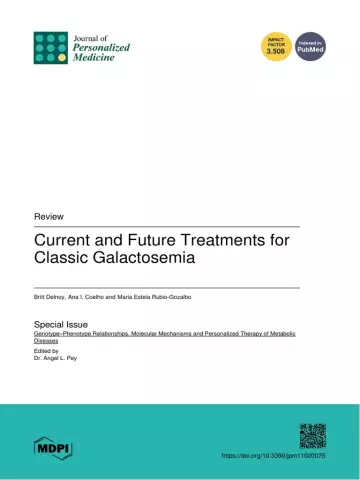- Author Rachel Wainwright [email protected].
- Public 2023-12-15 07:39.
- Last modified 2025-11-02 20:14.
Toxoplasmosis
Brief description of the disease

Toxoplasmosis is one of the most common human parasitic diseases. In Africa, South and Latin America, up to 90% of the population is infected with it. In Western Europe and the USA, the number of carriers of the infection reaches 25-50% of the population. In our country, according to doctors, every third person is infected. Despite such a significant spread, in most cases, toxoplasmosis in humans does not manifest itself in any way. Moreover, many people are not even aware of its existence. This is due to the fact that when toxoplasmosis develops, the symptoms often appear imperceptibly for the patient, or are attributed to him on some other already existing "sores". A completely different situation develops with severe forms of infection that affect the nervous system, liver, spleen, eyes and heart muscles.
Types of toxoplasmosis
Experts distinguish between congenital and acquired toxoplasmosis. In the first case, the infection affects the fetus in the womb. This is an extremely dangerous situation, since very often the activity of pathogens leads to severe disruptions in the work of vital organs and even the death of a child.
Acquired toxoplasmosis is less dangerous. It can have both acute and chronic course. In the acute phase, patients suffer from typhoid-like symptoms of toxoplasmosis: high fever, enlarged liver, neurological disorders. However, the more common is still the chronic form of toxoplasmosis, in which acute symptoms do not always appear, and if they do, they have a very weak intensity.
Ways of transmission
It is impossible to get toxoplasmosis from a sick person. In part, it is this property of the infection that explains the fact that the mandatory analysis for toxoplasmosis is carried out only for pregnant women, since, as mentioned above, they can transmit the disease to the fetus. Adults "catch" pathogens when they eat improperly cooked meat products or when they come into contact with cats, which are the main carriers and carriers of Toxoplasma. It should be noted once again that pathogens can easily exist in the body of a new host for several years, without making themselves known in any way. Only immunocompromised patients should be worried, since in their case the protective barriers are not strong enough to counteract harmful microorganisms.
Toxoplasmosis during pregnancy
If for ordinary people toxoplasmosis is just a slight nuisance, then toxoplasmosis during pregnancy often turns into a disaster. It is especially dangerous if the expectant mother first becomes infected with it during the gestation of a child, since in this case there are no antibodies in the woman's blood that form stable immunity. The risk of fetal infection increases as the placenta becomes more permeable. Toxoplasmosis is most dangerous during pregnancy during the second and third trimesters, when the chance of infection of the fetus approaches 25 and 70 percent, respectively. In the first three months, the mother transmits the disease to the child in 1% of cases, but almost always this ends with the death of the fetus, since the baby at this age still does not have an immune system or any other protective barriers.
If the expectant mother is diagnosed with toxoplasmosis, treatment is carried out in a hospital setting, which reduces the risk of transmission of infection and the development of birth defects. But even with good care and the participation of experienced specialists in half of the cases, unpleasant consequences cannot be avoided, therefore, when planning a pregnancy, the expectant mother is simply obliged to pay maximum attention to her health and pass the mandatory analysis for toxoplasmosis. The prevention of the disease is also of great importance. At the time of carrying a child, it is advisable to follow the following recommendations of doctors:
- if there is a cat in the house, then it should be moved to relatives or friends;
- raw meat, poorly fried steaks and other similar "delicacies" are excluded from the woman's diet;
- all work with the ground should be carried out only with rubber gloves;
- wash your hands thoroughly before eating;
- it is advisable to abandon the use of raw vegetables, fruits and herbs, subjecting the products to at least minimal heat treatment.
The measures listed above are extremely simple, but they are the ones that can prevent toxoplasmosis, the symptoms of which are often detected too late. Remember this and do everything possible to save your child's life, because, besides you, there will be simply no one to do this. Please also note that even if the first tests are negative, they should be repeated every 2-3 months to exclude accidental infections.
Symptoms of toxoplasmosis
There are no clinical signs to accurately diagnose toxoplasmosis. Most often, patients can observe only limited symptoms of toxoplasmosis:
- enlarged lymph nodes;
- slight increase in temperature;
- pharyngitis;
- inflammation of the choroid of the eyeball.

As you can see, the symptoms of toxoplasmosis are no different from the manifestations of dozens of other diseases, which explains the objective difficulties in making the correct diagnosis. The characteristic signs of the disease are observed only with a significant decrease in immunity and severe clinical forms, when the activity of Toxoplasma leads to brain damage, endocarditis and pneumonia.
Toxoplasmosis treatment
Given a strong immune system, no specific treatment is required for toxoplasmosis. Sulfadiazine and pyrimethamine are prescribed for patients with choreorenitis and other serious organ damage. For CNS lesions, glucocorticoids are recommended. Congenital toxoplasmosis or asymptomatic infections are treated with folic acid and sulfadiazine. In such cases, therapy lasts for at least one year, which excludes the development of serious complications in the future.
YouTube video related to the article:
The information is generalized and provided for informational purposes only. At the first sign of illness, see your doctor. Self-medication is hazardous to health!






